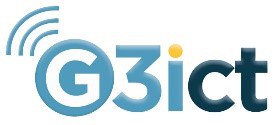Reflections on ICT Accessibility Developments in 2018 in India
Posted on January 01, 2019

Senior Fellow and Program Director Asia-Pacific, G3ict
The year 2018 has been a fairly active one for advocates of digital accessibility in India. Over the past year, some positive developments have been initiated and achieved. A most noteworthy one was the updating of the ‘Guidelines for Indian Government Websites' (GIGW) by the National Informatics Centre (NIC), the nodal agency for developing and maintaining websites. While the first version of these guidelines was notified in 2009, they still remained advisory in nature and hence there has been a very negligible amount of traction on making government websites universally accessible and usable.
In December 2016, a watershed was reached when the new Rights of Persons with Disabilities Act 2016 was passed, which was more in line with the United Nations Convention on the Rights of Persons with Disabilities (UNCRPD). Amongst other things, the Act requires both public and private service providers to make their facilities, products, and services accessible, in compliance with the relevant standards notified by the Government in this regard, and the accompanying rules which were notified in 2017 specifically identifies the GIGW as the official Indian website standard to be followed. Hence the updating of the GIGW was a most welcome move and the efforts of NIC to involve DPOs and accessibility experts in this process was really appreciated. Consequently, the new GIGW has detailed accessibility level AA compliance which is mandatory in nature. It references relevant Web Content Accessibility Guidelines WCAG guidelines to which it corresponds and also has a separate chapter exclusively dedicated to the accessibility of mobile applications. There is now a good strong legal and technical framework for India to implement web accessibility and the focus should be on implementation and capacity building going forward.
Another development in the domain of digital accessibility is the initiation of policy formulation on accessible broadcasting. The Ministry for Information and Broadcasting (Ministry of I&B) set up a committee to formulate a policy for accessible television for persons with hearing impairments. This process is still underway and will hopefully see fruition in 2019.
Last year also saw some public discussion on the issue of implementation of ICT accessibility when the Telecommunications Regulatory Authority of India (TRAI) floated a consultation paper on this issue. This culminated in recommendations from TRAI to the Department of Telecommunications to take several measures to facilitate ICT accessibility through programmes, policies, services and setting up a committee to oversee this. Following this, the Broadband India Forum, a group of private organisations and leading industry corporates, took up the issue of ICT accessibility and have set up a committee to work in this area. This is a great step since the partnership with industry is key to successful accessibility adoption and implementation.
Another agency which has initiated some interesting work which affects ICT accessibility for persons with disabilities is the Bureau of Indian Standards (BIS). Amongst its various working groups on different aspects of smart city standards, there is one on Active and Assisted Living which is also looking at standards to make ICTs accessible, usable and inclusive for persons who are elderly and those with disabilities. It is hoped that some really positive recommendations on accessibility standards adoption will emerge from BIS in the future.





























